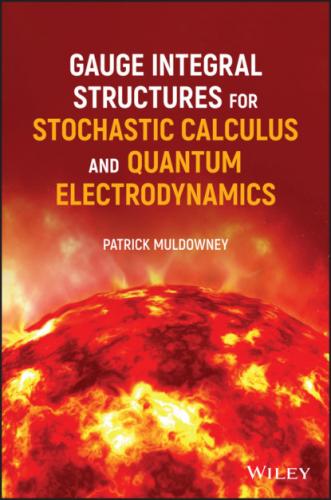These are problems essentially of mathematics, not physics or quantum mechanics. And the solutions proposed in [MTRV], and here, are intended to be contributions to mathematics, not physics.
The space of functions (for ) is where is the set of real numbers and . It is likely that Feynman's reference to “measure” above relates to Lebesgue‐type measure on measurable subsets of , which is not available in the form suggested by Feynman. Here are some mathematical issues:
Instead of measurable sets and measure of sets, [MTRV] provides a solution based on a structure of interval‐type subsets of , with a “natural” volume function for such subsets, and using the ‐complete system of non‐absolute integration described in [MTRV].
Feynman's statement that “the contributions from most of the paths largely cancel out” suggests a non‐absolute convergence approach, and confirms the unsuitability of methods requiring absolute convergence.
Stochastic integrals sometimes have the form where is a stochastic process. Feynman's integrals often include expressions involving the integral of kinetic energy . These are action functionals, integrals such aswhere the latter has the form of a stochastic integral . Generally speaking, for , is non‐differentiable. So none of these functionals actually exists as an integral and, in order to give mathematical meaning to them, various devices have to be used, such as the weak integrals of classical stochastic calculus, or Feynman's subdivision and limiting processes.
Feynman's “subdivision and limiting processes” are described in [F1], and in [FH] (Quantum Mechanics and Path Integrals [46], by R.P. Feynman and A.R. Hibbs). They are also examined in section 7.18 of [MTRV], along with their relationship6 to the ‐complete integral solution.
This book provides an alternative solution to these problems. Instead of integrals
These functionals are finite sums, not integrals;
they are sample versions of stochastic integrals (or of action integrals in the case of quantum mechanics);
they always exist;
and their expected values and other properties are defined and calculated by a well defined system of ‐complete (or gauge) integration in .
And, just as it is reasonable to estimate integrals by means of finite Riemann sums, it is equally reasonable to use finite samples to estimate the functional integrands by means of finite samples (or sampling sums).
This book considers mathematical aspects of the Feynman integral theory as it is expounded in [FH], which starts with
a single particle interacting with a conservative mechanical force,
and which progresses through to a system consisting of the interaction of a charged particle with an electromagnetic field .
For the latter system, [FH] declares that a certain action functional should be integrated over “all degrees of freedom” of the system—over all possible values of each of the variables.
This highly intuitive mode of expression is physically suggestive and resonant. But in mathematics a domain of integration must be defined and formulated as a definite mathematical set composed of definite mathematical elements or points.
In [FH] as in [MTRV] this is achieved for motion
and where
For system
is proposed. This involves a one‐dimensional simplification (like the simplification
where
